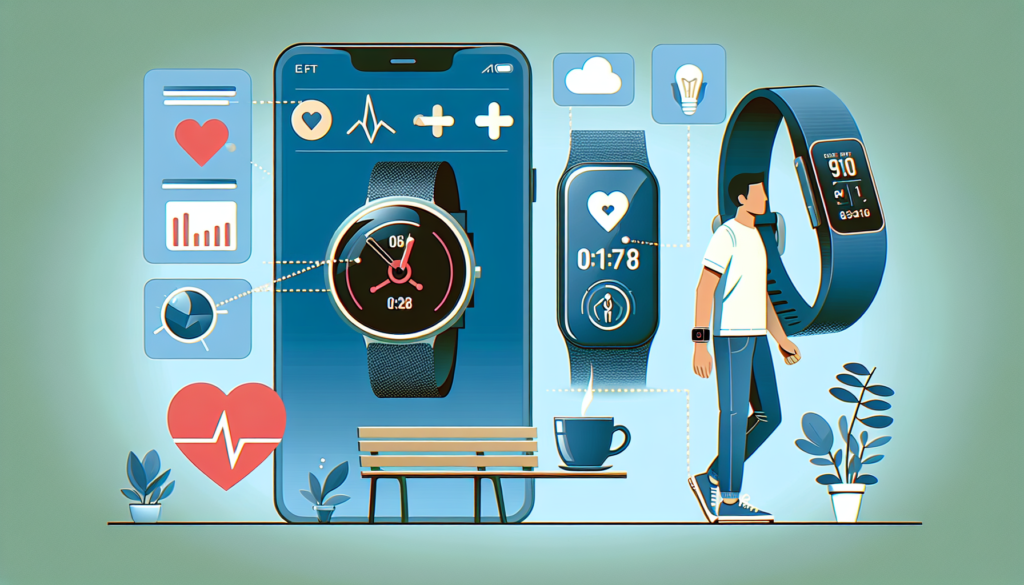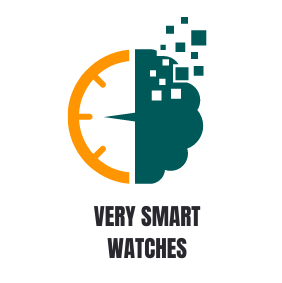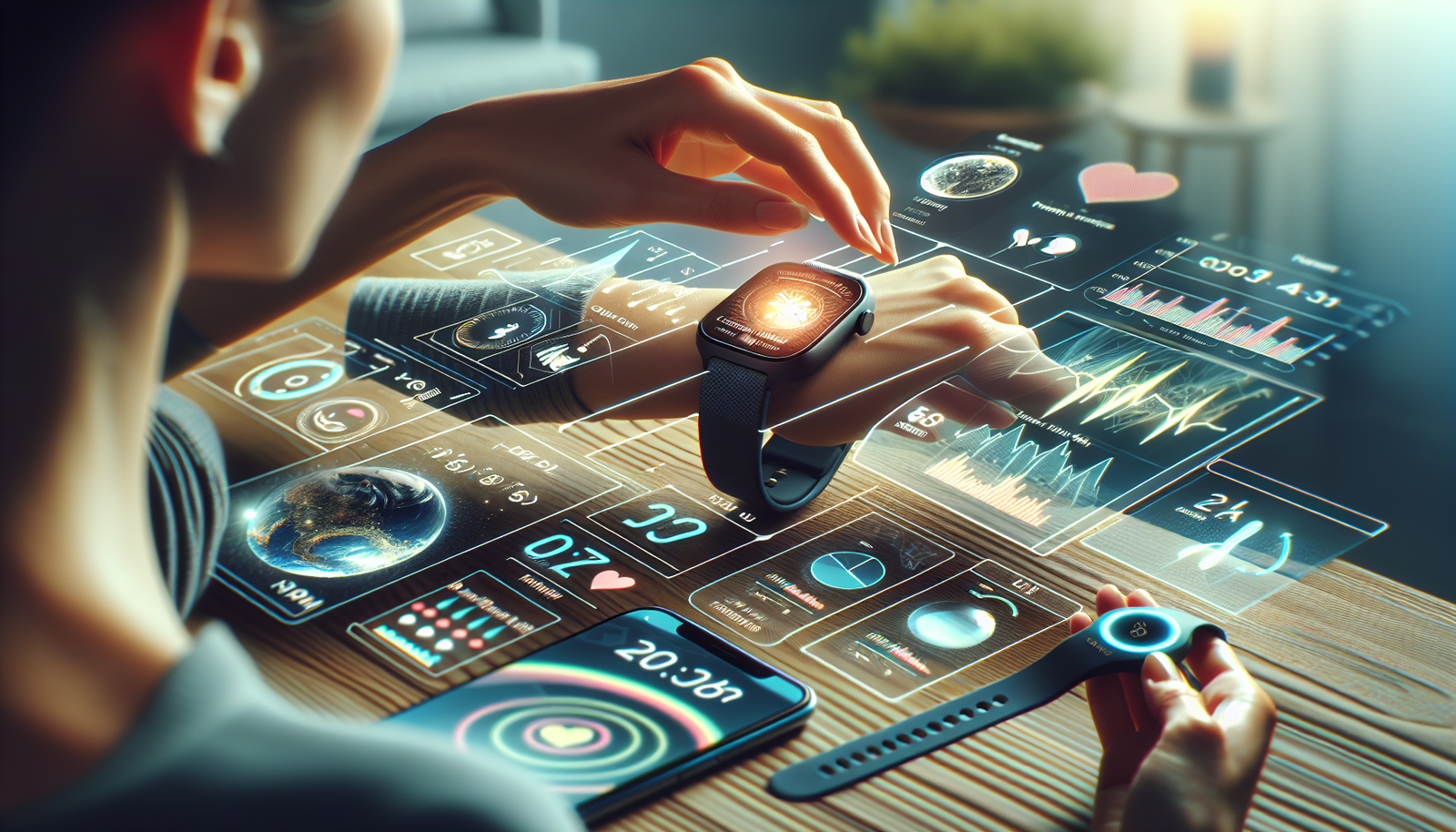Imagine a future where your wristwatch is much more than just a timepiece. It becomes your personal health companion, tailor-made for your individual needs and desires. This is the world of wearable wellness, where innovation has revolutionized how we approach our health and well-being. These devices are no longer just passive collectors of data; they actively empower us to take control of our own health. Whether you have a visual impairment, are in a wheelchair, or simply want to improve your mental well-being, these wearable devices cater to your unique needs. They can even detect pre-diabetes, biohack your health, and unlock your peak performance. It’s a conversation between you and your wellness, with smart data interpretation, thoughtful gifts, and specialized accessories to support you on your journey to a healthier, smarter life. Get ready to dive into the world of wearable wellness and discover the endless possibilities it has to offer.

1. Introduction
Welcome to the world of wearable wellness! In this article, we will explore the fascinating intersection of technology and wellness, and how wearable devices have revolutionized the way we approach our health and well-being. From fitness trackers to smart clothing, these devices have become our trusted companions, helping us lead healthier and smarter lives.
2. Understanding Wearable Wellness
2.1 What are wearables?
Wearables are electronic devices that can be worn on the body, typically on the wrist, as a piece of jewelry, or even integrated into clothing. They are designed to collect and analyze data related to our health and wellness, providing valuable insights and empowering us to make informed decisions about our lifestyle choices.
2.2 Evolution of wearable technology
The concept of wearable technology is not a new one. In fact, it dates back several decades, with the first wearable calculator being developed in the 1960s. However, it is in recent years that we have witnessed a significant evolution in wearable technology, with advancements in miniaturization, sensor technology, and connectivity. This has paved the way for the development of highly sophisticated and powerful wearable devices that can seamlessly integrate into our daily lives.
2.3 The concept of wellness
Wellness encompasses more than just physical health. It encompasses a holistic approach to well-being, encompassing aspects such as mental, emotional, and social well-being. It is about living a balanced and fulfilling life, and wearable wellness devices strive to support and enhance this journey.
2.4 The intersection of wearables and wellness
The intersection of wearables and wellness has given rise to a new era of personalized health tracking and empowerment. These devices not only monitor our physical activity, but also provide valuable insights into our sleep patterns, stress levels, and even our emotional state. By harnessing the power of data, wearables empower us to take control of our health and make meaningful lifestyle changes.
3. Benefits of Wearable Wellness
3.1 Personalized health tracking
One of the greatest benefits of wearable wellness devices is the ability to personalize health tracking. These devices are equipped with advanced sensors that can accurately monitor your heart rate, sleep patterns, and activity levels. This data is then analyzed to provide personalized recommendations for improving your overall health and well-being.
3.2 Empowerment through data insights
Wearable wellness devices provide us with valuable data insights that can help us better understand our bodies and make informed decisions about our health. By analyzing trends and patterns in our data, we can identify areas for improvement and make adjustments to our lifestyle accordingly.
3.3 Accessibility for all
Wearable wellness devices are designed to be accessible to everyone, regardless of age, ability, or background. They can cater to diverse needs, such as wheelchair accessibility or visual impairment, ensuring that everyone can benefit from the power of wearable wellness.
3.4 Mental well-being support
In addition to physical health tracking, wearable wellness devices also focus on mental well-being. They can track our stress levels, provide guided breathing exercises, and even offer mindfulness prompts. By prioritizing our mental health, wearable wellness devices are helping us achieve a more balanced and fulfilling life.
3.5 Early detection and intervention
Another significant benefit of wearable wellness devices is the ability to detect early signs of health issues and intervene before they become more serious. For example, some devices are capable of detecting irregular heart rhythms that may indicate a potential heart condition. By alerting us to these potential risks, wearable wellness devices empower us to seek medical attention and take proactive steps towards better health.
4. Types of Wearable Wellness Devices
4.1 Fitness trackers
Fitness trackers are perhaps the most well-known and popular type of wearable wellness devices. They typically come in the form of a wristband or a watch and are equipped with sensors that can track your steps, distance traveled, calories burned, and even your sleep patterns. Fitness trackers are perfect for those looking to kickstart their fitness journey or maintain an active lifestyle.
4.2 Smartwatches
Smartwatches offer many of the same features as fitness trackers, but with the added benefits of a traditional watch. They can display notifications from your smartphone, track your heart rate, provide GPS navigation, and even allow you to make phone calls or send messages. Smartwatches are ideal for those who want the convenience of a watch with the added functionalities of a fitness tracker.
4.3 Biometric sensors
Biometric sensors are wearable devices that can measure various biometric data points, such as heart rate, blood pressure, and body temperature. These sensors can be integrated into clothing, jewelry, or even adhesive patches that can be worn on the skin. Biometric sensors are particularly useful for individuals with specific health conditions or those who require continuous monitoring.
4.4 Smart clothing
Smart clothing takes wearable wellness to a whole new level. These garments are embedded with sensors and electronics that can track various biometric data points, such as heart rate, body temperature, and even posture. Smart clothing is comfortable, discreet, and perfect for those who want a seamless integration of technology into their everyday attire.
4.5 Virtual reality headsets
While not traditionally thought of as wearable wellness devices, virtual reality headsets have the potential to revolutionize health and well-being. They can be used for immersive fitness experiences, guided mindfulness and meditation sessions, and even as a tool for pain management. Virtual reality headsets offer a unique and engaging way to incorporate wellness into our lives.

5. Wearable Wellness Features
5.1 Heart rate monitoring
Heart rate monitoring is a common feature of wearable wellness devices. By tracking your heart rate, these devices can provide valuable insights into your cardiovascular health and help you optimize your workouts for maximum efficiency.
5.2 Sleep tracking
Sleep tracking allows you to monitor the quality and duration of your sleep. By analyzing your sleep patterns, wearable wellness devices can provide recommendations for improving your sleep hygiene and overall sleep quality.
5.3 Activity and step tracking
Activity and step tracking is a fundamental feature of many wearable wellness devices. By tracking your daily steps and activity levels, these devices encourage you to stay active and help you set goals for achieving a more active lifestyle.
5.4 Stress and emotion tracking
Some wearable wellness devices are equipped with sensors that can track your stress levels and even your emotional state. These devices can provide insights into your stress patterns and offer guided relaxation techniques to help you manage stress more effectively.
5.5 ECG monitoring
Advanced wearable wellness devices, such as smartwatches, may also offer ECG monitoring capabilities. This allows for the detection of abnormal heart rhythms and potential indicators of heart conditions.
6. Applications of Wearable Wellness
6.1 Exercise and fitness
One of the primary applications of wearable wellness devices is in the domain of exercise and fitness. Whether you’re a seasoned athlete or just starting your fitness journey, these devices can provide valuable insights and motivation to help you achieve your goals.
6.2 Chronic disease management
Wearable wellness devices are also proving to be effective tools for managing chronic diseases. For example, individuals with diabetes can use wearable devices to monitor their blood sugar levels and receive alerts when they are outside of the normal range. This allows for early intervention and improved disease management.
6.3 Mental health support
As mentioned earlier, wearable wellness devices are increasingly focusing on mental well-being. They can track stress levels, provide mindfulness exercises, and even offer guided breathing techniques to help manage anxiety and improve overall mental health.
6.4 Sleep improvement
With sleep disorders becoming increasingly prevalent, wearable wellness devices that offer sleep tracking and recommendations for improved sleep hygiene are in high demand. These devices help individuals optimize their sleep patterns and promote better sleep quality.
6.5 Workplace wellness
Wearable wellness devices are also finding applications in the workplace. They can be used to promote a culture of wellness, encourage physical activity, and even provide reminders to take breaks and practice mindfulness. By prioritizing employee well-being, companies can create a healthier and more productive work environment.
7. Challenges and Limitations
7.1 Privacy concerns
As with any technology that collects and analyzes personal data, wearable wellness devices raise privacy concerns. Users need to be aware of how their data is being collected, stored, and shared, and companies must prioritize user privacy and data security.
7.2 Accuracy and reliability
The accuracy and reliability of wearable wellness devices can vary significantly. Factors such as sensor quality, calibration, and placement can impact the accuracy of the data collected. It is important for users to understand the limitations of their devices and not solely rely on the data provided.
7.3 User adoption and adherence
While wearable wellness devices offer great potential, user adoption and long-term adherence can be a challenge. Users may initially be motivated to use these devices, but sustaining that motivation over time can be difficult. Companies must focus on creating engaging experiences that encourage continued usage.
7.4 Interoperability and integration
The interoperability and integration of wearable wellness devices with other health systems and technologies can be complex. Seamless integration with electronic health records, healthcare providers, and other devices is crucial for maximizing the potential of wearable wellness in healthcare.
7.5 Ethical considerations
The use of wearable wellness devices raises ethical considerations surrounding data ownership, consent, and the potential for discriminatory practices. It is important for companies and policymakers to address these ethical concerns and ensure that these devices are used in a responsible and equitable manner.
8. Future Trends in Wearable Wellness
8.1 Advanced health monitoring
The future of wearable wellness will see advancements in health monitoring capabilities. Devices will become even more sophisticated in tracking various health parameters, allowing for early detection of diseases and personalized preventive interventions.
8.2 Integration with AI and machine learning
The integration of wearable wellness devices with artificial intelligence and machine learning algorithms will enable more accurate data analysis and personalized recommendations. These technologies can learn from user data to provide tailored insights and adaptive coaching.
8.3 Virtual reality and augmented reality integration
Virtual reality and augmented reality integration will further enhance the immersive wellness experiences offered by wearable devices. From virtual fitness classes to guided meditation sessions, these technologies will revolutionize the way we engage with our well-being.
8.4 Customizable and modular devices
Future wearable wellness devices will be highly customizable and modular, allowing users to choose the sensors and features that are most relevant to their individual needs. This will ensure that wearable wellness becomes a truly personalized experience.
8.5 Focus on preventive healthcare
As healthcare systems shift towards a focus on preventive care, wearable wellness devices will play a crucial role in empowering individuals to take control of their health. These devices will provide the tools and insights needed to detect health issues early on and implement lifestyle changes for disease prevention.
9. The Role of Wearable Wellness in Society
9.1 Transforming healthcare
Wearable wellness devices have the potential to transform healthcare by shifting the focus from reactive treatment to proactive prevention. By empowering individuals to monitor and manage their health, these devices can reduce the burden on healthcare systems and improve overall health outcomes.
9.2 Empowering individuals
With wearable wellness devices, individuals have access to real-time data and insights about their health and well-being. This knowledge empowers them to make informed decisions and take proactive steps towards living a healthier and more fulfilling life.
9.3 Reducing healthcare costs
By promoting preventive care and early detection of health issues, wearable wellness devices can help reduce healthcare costs. Early intervention can prevent the progression of diseases and avoid costly treatments down the line.
9.4 Bridging gaps in healthcare access
Wearable wellness devices have the potential to bridge gaps in healthcare access by providing accessible and affordable healthcare solutions. These devices can be particularly beneficial for individuals in remote or underserved areas who may not have easy access to healthcare facilities.
9.5 Creating a culture of wellness
Wearable wellness devices are helping create a culture of wellness where individuals prioritize their health and well-being. By incorporating wellness into our daily lives, we can create a healthier and more sustainable future for ourselves and future generations.
10. Conclusion
Wearable wellness devices have revolutionized the way we approach our health and well-being. From personalized health tracking to empowering data insights, these devices have become indispensable tools on our journey towards a healthier and smarter life. With advancements in technology and a focus on preventive healthcare, the future of wearable wellness holds great promise for transforming healthcare, empowering individuals, and creating a culture of wellness. Embrace the power of wearable wellness and embark on a journey towards a healthier and more fulfilling life.

